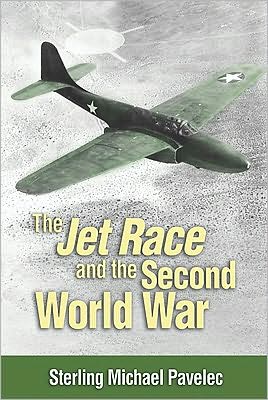

 |

|

The average rating for Jet Race and Second World War based on 2 reviews is 3.5 stars.
Review # 1 was written on 2017-09-01 00:00:00 James Martin James MartinThis is a solid, very brief overview of the jet programs of the various nations in WW2. Pavelec's main argument has a few parts, and is hard to sum up in a single sentence. Essentially, he makes the case that the restrictions of the Versailles treaty actually created an environment where German leadership was more conducive and open to new technological innovations, such as the jet engine. That engine, largely the work of Hans von Ohain, was driven more by Ohain's desire for a more elegant alternative to the loud, noisy, dirty piston engines of the time. The German's dire situation as the war progressed made the need for a qualitatively superior jet aircraft more necessary for them, hence the increased interest and resources put into developing it. Pavelec takes care to shatter a few myths about why the Me 262 did not achieve more success. It was not because Hitler preferred the plane to be a bomber (his orders on that regard were largely ignored), it was not because of lack of skilled pilots (the jet pilots were all hand-picked from the finest German aces of the day), and it was not a lack of fuel (the type of fuel used by the jets was in large supply). Rather, it was a lack of resources and production capability. The Combined Bomber Offensive wreaked havoc on German production, forcing jet builders to retreat to small, dispersed wooden structures in the forests to avoid being targeted. Once the planes were built, they often could not be transported because of the damage to German infrastructure. But mostly, the German jets weren't effective because the Western allies could out produce the Germans to a frankly ridiculous degree. In the last years of the war, allied aircraft outnumbered Nazi planes nearly 50:1. Pavelec also includes interesting chapters on the British and American programs, revealing Britain's completely independent development of jets, which did see use in the war, although not in combat. Some early British jets were actually able to stop German rockets from striking England by literally flying next to the Vengeance weapons and hitting them with their wings! The Americans had a jet program, but spent little resources on it, and instead they borrowed most of their work from the British. However, the American contribution was not in technological development, but production. My only real complaint about the book is that it relies a little too much on the "genius inventor" paradigm of technological progress, which puts perhaps a little too much focus on single individuals rather than looking at broader systems. The book does a little bit to describe the context that fostered these engines differently in each country, and in some cases, this approach is warranted, especially with the early British program and Frank Whittle. This is a pretty minor nitpick. All in all, this is a fun, quick, informative read for anyone interested in jet programs during WW2. |
Review # 2 was written on 2013-08-14 00:00:00 David Turner David TurnerI enjoyed the data and anecdotes but the tone of "demythologizing" two iconic aircraft of World War II gets tiresome. The author's preference for the SE5a over the camel is palpable, understandable, but just a tad silly. Both planes seem to have been equally successful in Allied service. |
CAN'T FIND WHAT YOU'RE LOOKING FOR? CLICK HERE!!!